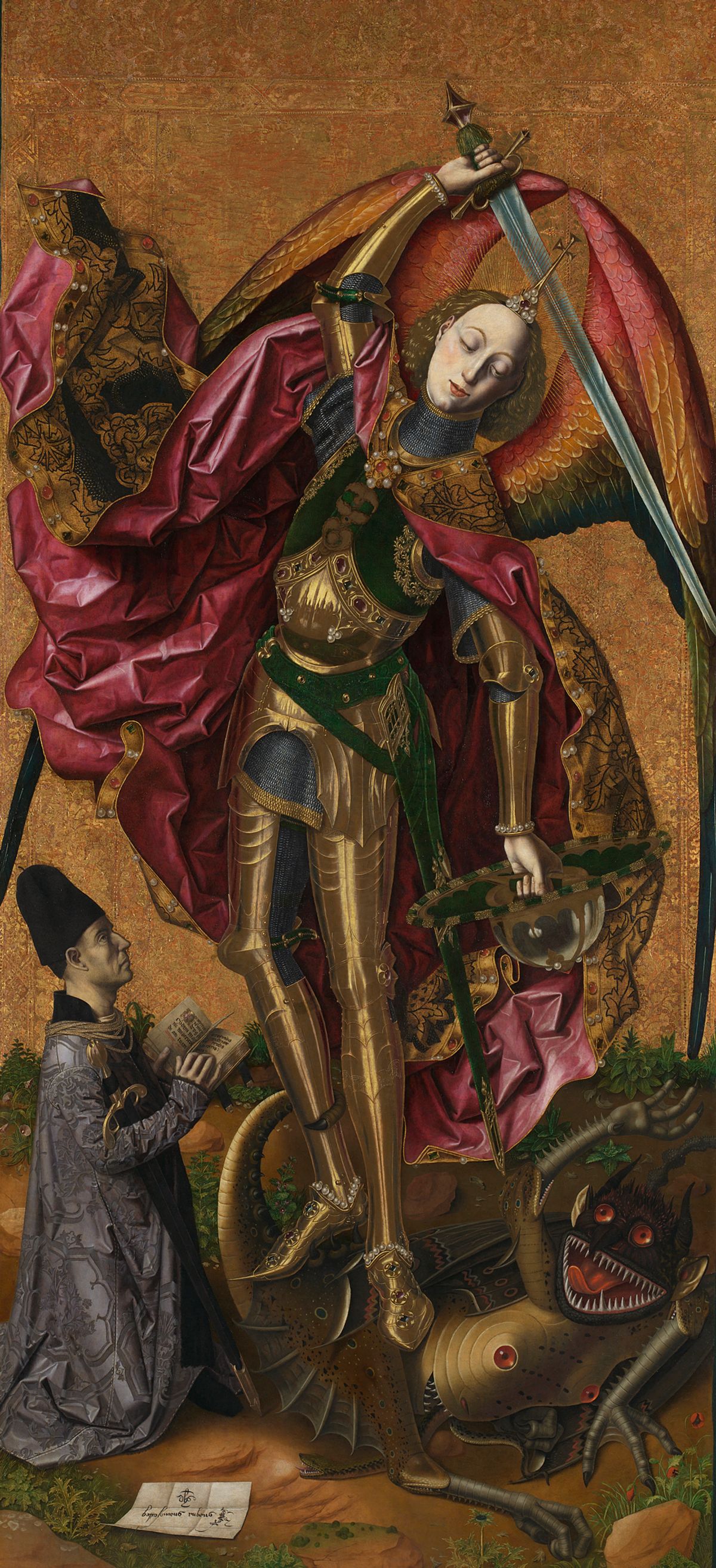Bartolomé Bermejo: Master of the Spanish Renaissance at the The National Gallery (until 29 September; free) profiles an artist who is hardly a household name, even among scholars of Spanish art, but that is no reason to miss this cabinet exhibition of seven of his paintings. Almost nothing is known of Bermejo's life and career, except that he appears to have worked mainly for clients in the Kingdom of Aragon; his oeuvre amounts only to about 20 paintings. The works here are exquisite, rightly comparable to the jewel-like paintings of his immediate Netherlandish predecessors, such as Jan van Eyck, Robert Campin and Rogier van der Weyden (whose works he may have seen). The paintings are outstanding for their sensuous textiles, scintillating silver and glowing gold objects—particularly the fantasy arms and armour—shimmering jewels, closely and correctly observed flora, atmospheric backgrounds and the high drama of the four predella panels. The National Gallery’s own St Michael Triumphant Over Satan (1468) is resplendent after its recent, year-long restoration.
Kiss My Genders at the Hayward Gallery (until 8 September; tickets £14, concessions available) should be more overwhelming than it is. Thirty-five artists present works, some of which come with warnings of strobe lighting and sexual content. There is even a section filled with latex. But united by a common thesis, which argues that gender is not a fixed, binary concept, this exhibition feels remarkably cohesive. Perhaps the most interesting works are those throwing off not one yoke but two. For example, in Tejal Shah’s work the process of “gender-queering” is tied up with decolonisation. Shah’s work in the show explores the detrimental effect that the Christian church has had on indigenous cultures that are accepting of genderfluidity. Her photography reimagines mythological Indian scenes whose imagery was popularised under the Raj, reintroducing a third sex that was present in pre-colonial folklore. Though many of these works contain humour, pain is also equally present. A beautiful ball gown by Hunter Reynolds spells out some 20,000 people who have died during the HIV crisis. This unflinching intermingling of camp and death is best echoed in the words of the trans Latinx artist Martine Gutierrez who says, “we live in an era where my existence is political, whether I want to be or not”, a reminder that even today, for some, simply being yourself is an act of quiet revolution.
The 251st edition of the Royal Academy of Arts’s Summer Exhibition (until 12 August; tickets £16, concessions available) is a floor-to-ceiling panorama of more than 1,500 paintings, sculptures, drawings, video installations and other works of art by artists from all stages in their careers, ranging from Royal Academicians like Grayson Perry and Tracey Emin to lesser-known talent. The show, co-organised this year by the Scottish painter Jock McFadyen with a committee chaired by Christopher Le Brun and including Bob and Roberta Smith, aimed to “focus on artwork in all media which responds to the contemporary world”, McFadyen says. Overarching concerns were climate change—the architecture gallery, organised by the British architect Spencer de Grey, was entirely dedicated to maquettes of sustainable buildings—and the looming doom of Brexit, which was visible in works such as Jeremy Deller’s imposing banner We Are All Immigrant Scum.


